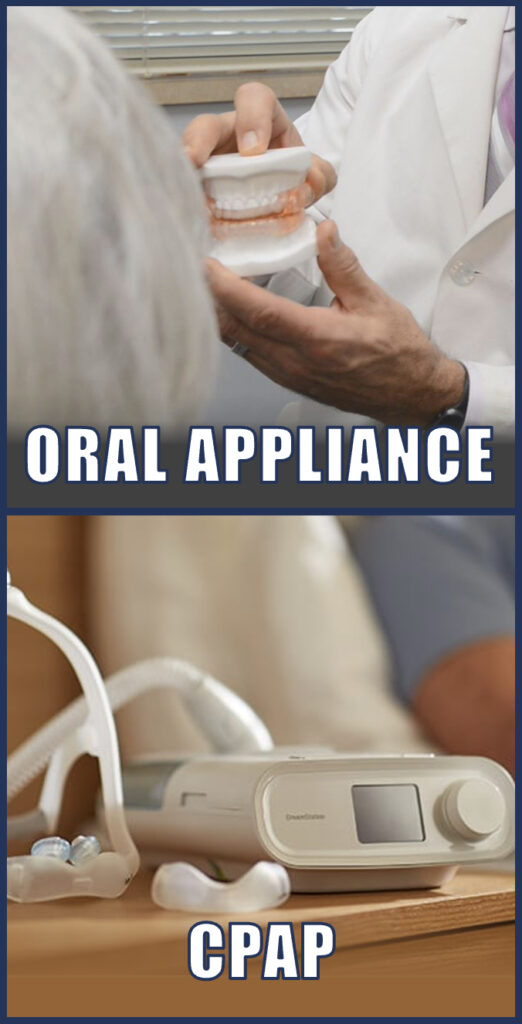In the aftermath of a recall by a major CPAP manufacturer, Phillips Respironics, there is national CPAP shortage. As a result, oral appliance therapy is being considered as a treatment option more than ever before.

The most common therapy for Obstructive Sleep Apnea (OSA) in the United States is positive airway pressure, either a continuous pressure (CPAP) or one that auto adjusts (autoPAP). An alternative option is a mandibular advancement devices (oral appliance) which has been gaining popularity over the last 10 years. Traditionally, CPAP has been the first choice of physicians for treatment of patients with OSA because of its effectiveness in eliminating apnea, easy access from medical equipment companies, and cost to patient. However, all of those are changing!
Efficacy and Compliance
While CPAPs are effective in eliminating a higher percental of apnea, compliance rates are poor, meaning many patients only use if a couple times a week and for only a couple hours. Studies show that 30 to 50% of CPAP users are noncompliant, giving reasons like report machine noise, mask discomfort, nasal dryness and claustrophobia. In contrast, oral appliances are widely accepted by patients with users reporting nearly 100% compliance. Most wear their appliance the majority of nights for longer times. Since noncompliant patients are at risk of heart disease, vehicular accidents, and many other health risks, rate of compliance is as important as efficacy rate.
Availability of Treatment
Thousands of dentists all over the country have been trained in dental sleep medicine and how to properly fit and adjust a patients with an oral appliance. Organizations like the American Academy of Dental Sleep Medicine and the Sleep and Breathing Academy promote education and set guidelines for proper treatment. There are multiple dental labs that make the custom appliances, and they have not experience issues with manufacturing in 2021 and 2022. However, the recall from Philips and supply chain issues by other manufacturers have caused a national shortage of CPAPs with patients often experiencing a 3-4 month backlog before receiving a CPAP.
Cost
Most insurance plans now cover oral appliances, known as mandibular advancement devices. There are even in-network providers, such as Sleep Impressions, so patients can chose oral appliance therapy for only slightly more than a CPAP.
This has led to physicians reconsidering the best option for the patients. Compliance continues to be a primary distinction between CPAP and oral appliance therapy. It should be no surprise that physicians now involve patients in the OSA therapy decision. Patients can choose the therapy that suits their health needs as well as their lifestyle and personal preference. Recent reports show that when given a choice, patient compliance increases for both therapies with 50% of patients now choosing to start with an oral appliance.
References:
